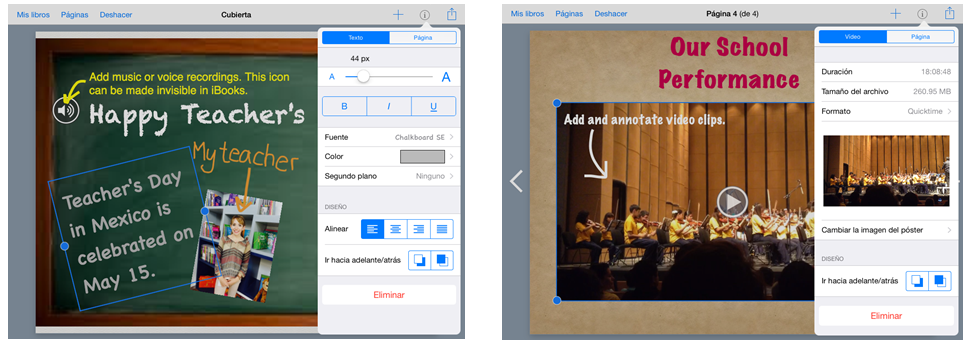 Lysette Taplin is an experienced English language teacher, editor and author of a number of ELT materials. Ahead of this year’s Teacher’s Day in Mexico, she discusses the changing role of the teacher and the implementation of digital tools in the classroom.
Lysette Taplin is an experienced English language teacher, editor and author of a number of ELT materials. Ahead of this year’s Teacher’s Day in Mexico, she discusses the changing role of the teacher and the implementation of digital tools in the classroom.
Teacher’s Day, celebrated in Mexico on May 15, honors the role educators play in providing students with quality education. Ten to twenty years ago, that role was to be the primary information giver who stood at the front of the classroom “pouring knowledge into passive students who wait[ed] like empty vessels to be filled”[1]. However, now that the 21st century is well under way, our role needs to shift towards becoming a facilitator: giving students an idea, a topic to discuss and providing them with the confidence to communicate. This type of teaching is known as student-centered learning, and has been favored in recent years as it puts the students’ learning experience at the center. Our responsibility as teachers is to make sure our lessons are tailored to the individual needs of our students, understanding that each student is unique and that they come with prior knowledge and their own perceptual frameworks. I’m not saying that we need to completely relinquish the traditional role; there are certain moments in the classroom when teacher-instruction is necessary, but we must encourage learners to contribute and communicate using their own ideas. The next Steve Jobs or Bill Gates may be sat in your class, but if we spoon-feed them the information, they are never going to reach their true potential. Today, being an English language teacher is not just about teaching students the language, but teaching them how to think critically, how to communicate and collaborate, and how to be creative: the famous 4Cs.
We also need to take into account that our world and consequently our lives are becoming increasingly more digitalized. Students need to learn how to use technology and with recent advances in web tools and apps, technology-based methodologies, such as blended learning, hybrid learning, the flipped classroom and MOOCs, have attracted more interest among educators as they create learning environments which propel students into the 21st century. However, what if we don’t have access to technology at school? What if the technology we do have is slow and outdated? As teachers, we have to be creative with the technology that is available to us. Most students today have cell phones, so rather than try to eliminate them as a distraction, we should try to capitalize on the technology that students already possess. With the built-in camera tool cell phones have, we can ask students to document their work by taking photos or videos, or use the voice recording feature to create podcasts which encourage communication and collaboration. We can also turn traditional writing activities into blogs to be published online or even have students write a short book review of 140 characters to publish on Twitter.
There are also a wide range of user-friendly apps available for iOS and Android. One of my favorites is Book Creator, a free app which lets students create eBooks using photos and images from their tablet or cell phone library, from the web, or by using the device’s camera. They can also add videos and music, record their own voice, and annotate their books using the pen tool. This is a great tool to use to bring together students’ work or evidence project work.

Another great app for iOS users is iMovie. This app allows students to drag videos and photos taken on their device into a movie clip to which they can add music and voiceovers. Depending on the task students are carrying out, they can use different movie templates, creating presentations which become more relevant to the real world. By using interactive technology, we make learning more engaging and memorable.

It is also important to understand that when our students graduate, they will have an advantage if they can work successfully with other cultures, and as teachers, we can promote that skill by setting up email or social network exchanges between students in different schools and countries.
I believe technology in the classroom is not just a new fad, but rather a vital empowering tool that engages students and brings discovery, excitement and fun into the classroom. The dismal fact is that, as teachers we will never know all there is to know about technology. So, why not create co-learning environments where students teach you how to do something techie. As facilitators, it is important to relinquish some control of the learning to the student which reinstates student-centered learning and will give students confidence to communicate their ideas.
For me, one of the most important aspects of being a teacher is be passionate and enthusiastic. We need to be so excited about what we are teaching that every single student wants to be involved. We need to tell our students that it is OK to make mistakes, and we need to show students that we are proud of what they CAN do, and not focus on what they can’t yet do. The best satisfaction a teacher can have is to be a facilitator, engaging and motivating their students to succeed. Happy Teacher’s Day!
References
[1] Constructivism as a Paradigm for Teaching and Learning, Thirteen Ed Online. Date of access: 08/04/2015. https://www.thirteen.org/edonline/concept2class/constructivism/index_sub1.html


how to teach think critically?
Reblogged this on So, You Think You Can Teach ESL?.
Reblogged this on learn english with antri parto.
Reblogged this on egcloyd and commented:
This is very significant to me right now…as I am completing a project on Mexican culture, a large aspect of which is education!
This is a very interesting issue. For me, as an ESL teacher, the passion & excitement of teaching is all there….and yes, once the students feel this, they get more passionately involved as well.
Totally agree, I am working hard in order to play an effective role as a 21st. Teacher. Happy Teacher’s Day!!
I have no issues about inviting “new” technologies to the Learning process in the classroom (except thet using mobiles is banned by school rules): fair enough to allow pupils to use the tools I also use! Anything will do to make them feel more confident and daring.
But what when it comes to assessing what they can achieve? Using “hi-tech” tools gets addictive with students: they quickly learn to rely on them and find it very difficult (they say impossible) to work without them, while I can’t allow them to use e.g. online translation tools, or simply go online, during a “reading” or “writing” exam …